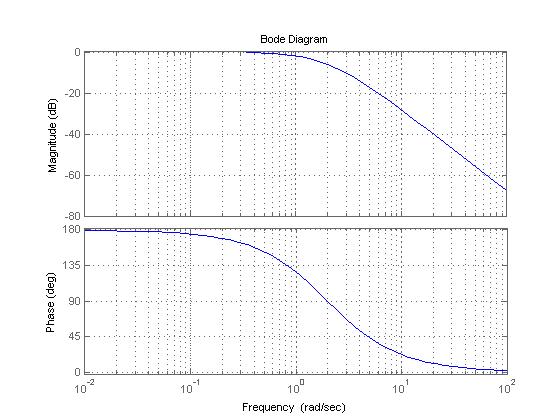|
|
| Line 131: |
Line 131: |
|
==Convolution== |
|
==Convolution== |
|
|
|
|
|
|
<math>\text {The convolution equation is as follows: }\,</math> |
|
coming soon...? |
|
|
|
|
|
|
<math> |
|
|
x(t)=x_{in}(t) * h(t) = \int_{0}^{t} {x(t_0) \, h(t-t_0) \, dt_0} |
|
|
</math> |
|
|
|
|
|
<math>\text {It does basically the same thing as the Laplace Transform. }\,</math> |
|
|
<math>\text {To start we must inverse transform our transfer function }\,</math> |
|
|
|
|
|
|
|
|
<math>\mathbf {X}(s)=-\frac{4}{(s+2)^2} </math><br /><br /> |
|
|
|
|
|
<math>\text {Which once more yields: }\,</math> |
|
|
|
|
|
<math>\mathbf {x}(t)=-4te^{-2t}</math><br /><br /> |
|
|
|
|
|
<math>\text {Then we put this into the convolution integral: }\,</math> |
|
|
|
|
|
<math> |
|
|
x(t)=x_{in}(t) * h(t) = \int_{0}^{t} {-4(t-t_0)e^{-2t-t_0} \, dt_0} |
|
|
</math> |
|
|
|
|
|
<math>\text {Which once more yeilds: }\,</math> |
|
|
|
|
|
|
|
|
<math>\mathbf {x}(t)=(-cte^{-2t})</math><br /><br /> |
|
|
|
|
|
|
|
|
<math>\text {Not exactly the same but remember initial conditions arnt used}\,</math> |
|
|
|
|
|
|
|
|
Created by Greg Peterson |
|
Created by Greg Peterson |
Using the Laplace Transform to solve a spring mass system that is critically damped
Problem Statement
An 98 Newton weight is attached to a spring with a spring constant k of 40 N/m.
The spring is stretched 4 m and rests at its equilibrium position.
It is then released from rest with an initial upward velocity of 2 m/s.
The system contains a damping force of 40 times the initial velocity.
Solution
Given







Solving the problem






![{\displaystyle {\mathcal {L}}[{\frac {d^{2}x}{dt^{2}}}+{\frac {40}{10}}{\frac {dx}{dt}}+{\frac {20}{5}}x]}](https://wikimedia.org/api/rest_v1/media/math/render/svg/e345f0da39c1bbd518a3b0f9f559d233f42cf82e)






![{\displaystyle {\mathcal {L}}^{-1}[-{\frac {4}{(s+2)^{2}}}]}](https://wikimedia.org/api/rest_v1/media/math/render/svg/636e9fcb557ef58d3f0b4cfc97e5ccf9efa9f103)



Apply the Initial and Final Value Theorems to find the initial and final values
- Initial Value Theorem

- Final Value Theorem

Applying this to our problem












Bode Plot of the transfer function
Transfer Function

Bode Plot

______________________________Break Points__________________________________

Transfer fucntion




Convolution












Created by Greg Peterson
Checked by Mark Bernet













![{\displaystyle {\mathcal {L}}[{\frac {d^{2}x}{dt^{2}}}+{\frac {40}{10}}{\frac {dx}{dt}}+{\frac {20}{5}}x]}](https://wikimedia.org/api/rest_v1/media/math/render/svg/e345f0da39c1bbd518a3b0f9f559d233f42cf82e)






![{\displaystyle {\mathcal {L}}^{-1}[-{\frac {4}{(s+2)^{2}}}]}](https://wikimedia.org/api/rest_v1/media/math/render/svg/636e9fcb557ef58d3f0b4cfc97e5ccf9efa9f103)
































